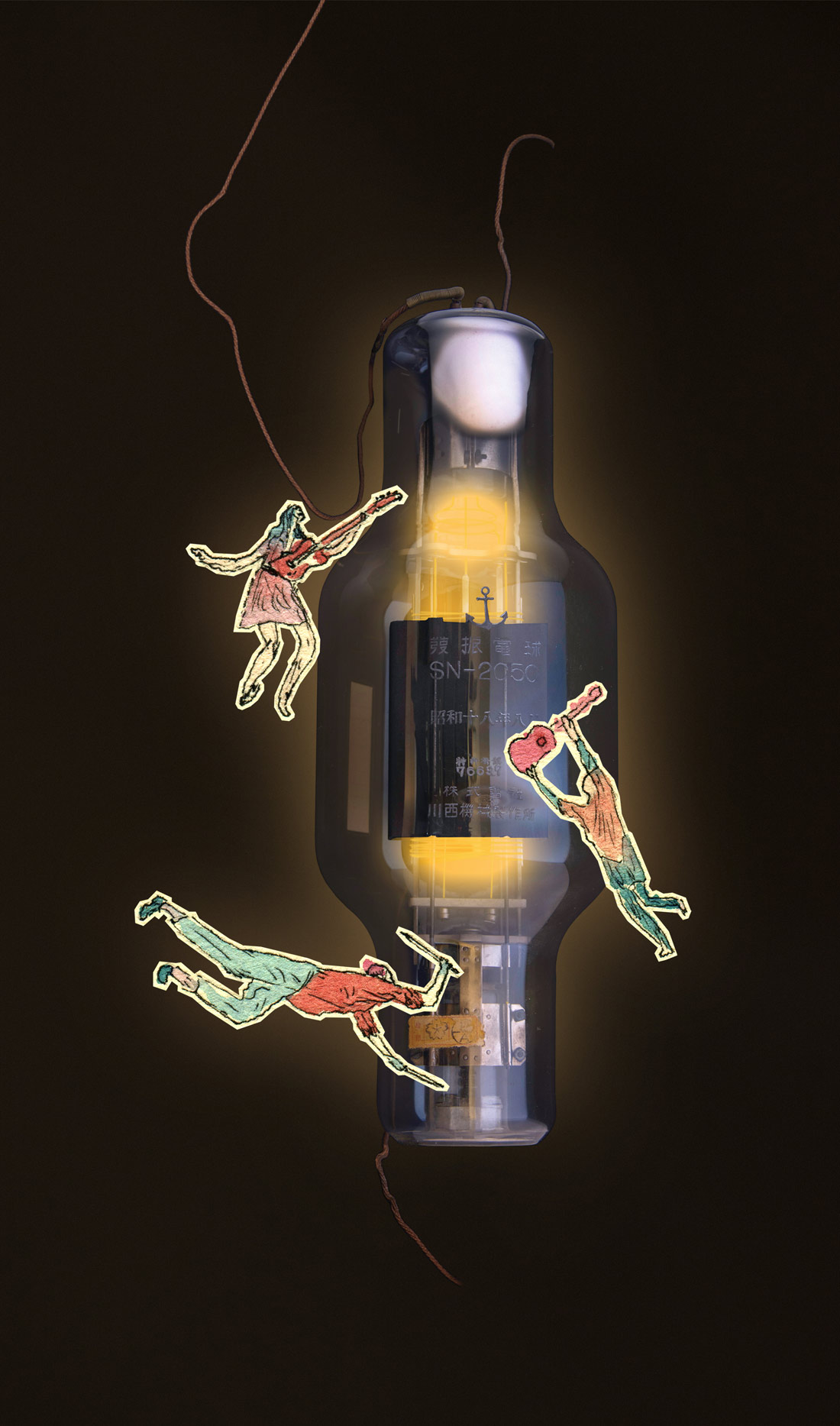When I think of AEA, I think of vintage-styled, classic ribbon mics. The AEA R-series harks back to RCA ribbon mics in both looks and tonal qualities, while AEA's modern manufacturing approach includes innovations in internal shockmounting and adding active electronics for higher output levels and less sensitivity to preamp input impedance. The N22, in contrast, represents the first microphone in AEA's Nuvo series — the new generation of modern mics from AEA. The N22, built in Pasadena, California, sports a distinctive look, with a sleek, 1.5'' diameter cylindrical body, satin nickel finish, and AEA's familiar cloth screening. Inside, the N22 sports AEA's trademark Big Ribbon technology and clean JFET active circuitry. Phantom power is therefore required, and care was taken to ensure that a typical USB audio interface could easily power the mic. Even as their entry-level microphone, the N22 sports the fit and finish of a much higher priced studio mic. No corners were cut on the build quality and finish, and the included shockmount provides a solid grip with a unique, low-profile configuration.
AEA's design goal for the N22 was to bridge the gap between traditional ribbon mics, with their classic, but sometimes mellow tone, and modern condensers, with their forward high-mids and rolled-off bottom. On paper and in use, the N22 exhibits a slightly-hyped upper midrange, between 2 kHz and 6 kHz, and a bottom end that rolls off gently, starting at around 800 Hz. The top end also falls off quickly, dropping about 10 dB from 5 kHz to 15 kHz. The overall frequency response is not that different from a typical studio dynamic microphone, like a Shure SM57. The N22's ribbon motor, however, brings a smoother flavor and a bidirectional figure-8 pattern, which provides a bit more natural ambience to the recordings. High frequencies above 10 kHz are extremely attenuated, so the N22 will never sound harsh or strident. Fabric screening protects the sensitive ribbon element, and the N22 begs to be used up close, even for vocal and drum recording. As with all ribbon mics, care should be taken to avoid direct windblasts towards the capsule, but high SPL sources can easily be handled by this mic. A simple pop filter would protect the mic while recording vocals or kick drums.
I had the opportunity to put up the N22 in many sessions, using preamps from API, Chandler, Focusrite, Manley, and Warm Audio, to capture acoustic guitar, electric guitar amps, male and female vocals, drums, and piano. My first impression of the N22 was that it felt a bit thin and midrange focused — almost too narrow a frequency response for my taste. However, after playing around with placement on various sources, I found that I could (and needed to) place the mic very close to most sources. The N22's proximity boost in the low end is mitigated by its inherent frequency response, so even acoustic guitars and vocals can be close-mic'ed without fear of picking up too much low- end mud, or overdriving the capsule. The slightly-boosted upper midrange coupled with the ribbon's smoothness brought a nice size and color to snare drums, vocals, acoustic guitar, and piano. I would characterize the flavor as modern, but folksy, in that sources sound natural, but still present. Overdubbing and recording multiple instruments on the same production all with the N22 resulted in a coherent blend of sounds that didn't build up in any particular frequency range.
A pair of N22s would provide a great way to record a singer who also plays guitar. Simply position each mic so that its null point (the side of the figure-8) rejects either the voice or the guitar, and there should be a good deal of isolation for each source. The off-axis bleed and rear pickup of room reflections actually add useful ambience and depth to the tracks. The N22 produced a useful and unique sonic character for almost all the sources I tried it on. I'm not sure I would want this as my only mic, but the N22 paired with a fuller-range mic would be a very capable combo for almost any recording setting. This mic does not compete with AEA's superb A840 [Tape Op #94] or R92 [#56] mics, but the N22 definitely fills a void in the affordable all-around studio mic category. I would compare the N22's usefulness (but not necessarily its sound) to the AKG C 414 and Shure KSM series. The combination of its ribbon qualities and nicely-shaped frequency response makes the N22 a winner in its category.




_disp_horizontal_bw.jpg)